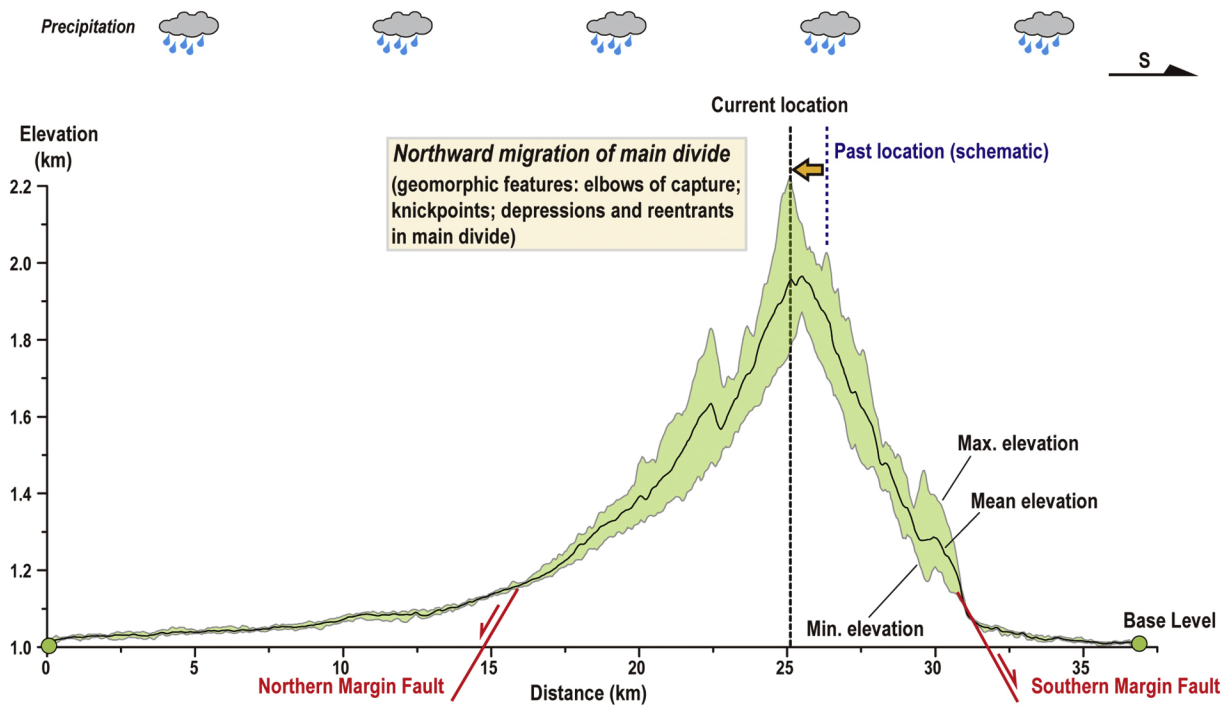Editor: 邵丹蕾 Author: HE Chuanqi Time: 2019-09-27 Number of visits :190
He, C. Q., Rao, G.*, Yang, R., Hu, J. M., Yao, Q., & Yang, C. J. (2019). Divide migration in response to asymmetric uplift: Insights from the Wula Shan horst, North China. Geomorphology, 399, 44–57. https://doi.org/10.1016/j.geomorph.2019.04.024
Drainage divides play significant roles in shaping landscapes. Nevertheless, they are not static through space andtime. Previous numerical models have demonstrated divide motions in response to asymmetric tectonic uplift.However, natural examples that have nicely recorded these processes and hence could verify the results of numerical simulations are still lacking.
He et al. (2019) integrated the results of digital elevation models(DEMs)-based morphotectonic analysis with the tectonic landforms observed during field surveys to investigatethe status of topography and probable drainage evolution history of the Wula Shan, a roughly west-east trending horst block bounded by normal faults in the Hetao Graben, North China.
The results demonstrate that the differences of obtained geomorphic indices are significant between the southern and northern drainage basins; higher hypsometric integral and normalized channel steepnessvalues, and lower ratios of valley floor width to valley height indicate higher tectonic uplift rate at the southern flank. The main divide of the Wula Shan that had migrated northward (Fig. 1) was probably caused by the decrease of asymmetry in vertical uplift associated with the margin faults. The results of this studymay shed new light on divide mobility as well as landscape evolution in actively extending regions.

Fig. 1. Topographic swath profile illustrating the divide migration history of the Wula Shan. Geomorphic features, including elbows of capture, knickpoints near the main divide, depressions and reentrants in main divide, demonstrate that the main divide had migrated northward to its current location.
